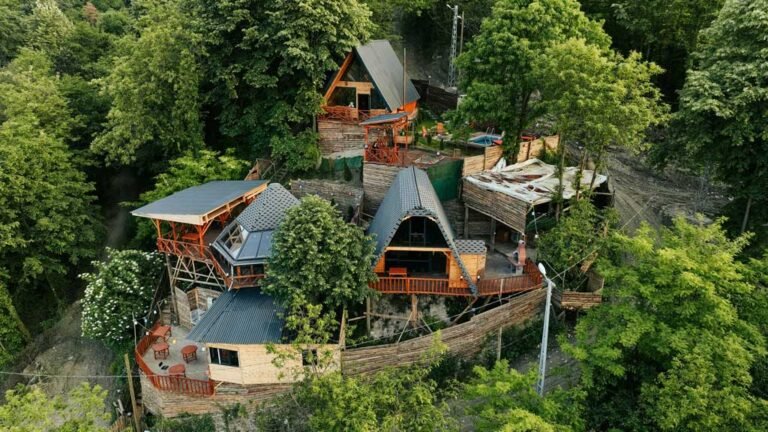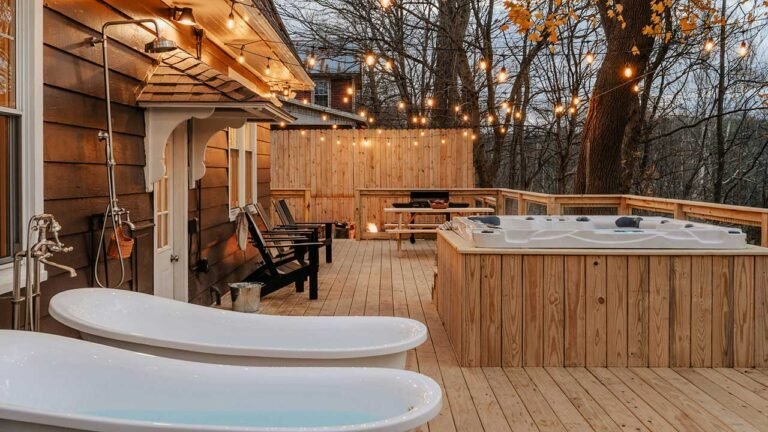Forest ropes courses, climbing parks and high ropes courses in comparison
Welcome to the fascinating world of climbing! If you’re looking for a new, exciting leisure activity that not only challenges your body but also invigorates your mind, then climbing could be just the thing for you. In recent years, climbing has developed from a niche sport to a popular leisure activity that captivates people of all ages and abilities.
After many tours, I have worked out the differences between climbing parks and high ropes courses in the following article. In a nutshell: Climbing gardens (also known as forest ropes courses) use the local conditions in the forest and blend in harmoniously. High ropes courses, on the other hand, consist of artificial climbing structures or obstacles. In the photo below I have compared two typical variants.
In recent years, climbing has developed from a niche sport to a widespread leisure activity that captivates people of all ages and abilities.
The growing popularity of climbing as a leisure activity
Climbing is more than just a sport: it is an adventure that connects body and soul. The increasing popularity is reflected in the growing number of climbing gyms and outdoor climbing parks in Germany and Europe. More and more people are climbing to improve their physical fitness, boost their self-confidence and overcome their personal limits.
The beauty of climbing is that it can be customized. Whether you are a beginner taking your first steps on the climbing wall or an experienced climber looking for new challenges – the climbing world has something for everyone. Climbing in a group also promotes team spirit and social skills. This makes it an ideal activity for families, friends and team-building events.
Basic differences between climbing facilities
You will quickly realize that there are different types of climbing facilities, each with their own special features and target groups. The most common types are forest rope parks, climbing parks and high ropes courses.
Forest rope parks, often referred to as climbing forests, offer a climbing experience close to nature where you climb from tree to tree. These parks are perfect for those who want to enjoy the beauty of nature and experience an adventure at the same time. They are generally suitable for all age groups and offer different courses with varying degrees of difficulty.
High ropes courses are usually designed to promote teamwork and trust. They consist of various elements and platforms that a group has to master together. This is why they are popular with companies and organizations to strengthen team dynamics.
What is a climbing park
You’ve probably heard of climbing parks or even seen pictures of these impressive facilities. But what exactly constitutes a climbing park and why do they attract so many enthusiasts? Let’s dive into the world of climbing parks together and discover what makes these adventure landscapes so special.
Definition and general features of climbing parks
A climbing park, often referred to as a high ropes course or adventure park, is an outdoor leisure facility that offers a variety of climbing elements and obstacles. These parks are designed to offer both physical and mental challenges, combining fun and adventure in the great outdoors.
The general features of a climbing park usually include various courses with different levels of difficulty, allowing everyone to climb at their own level. Safety is always the top priority: all visitors are provided with safety equipment and briefed by experienced instructors before exploring the courses.
Climbing parks are usually located in natural surroundings, often in forests or parkland, which makes the experience even more impressive. The integration into nature allows visitors to enjoy the fresh air and master the challenges of climbing at the same time.
Typical elements and target groups of climbing parks
The typical elements of a climbing park range from simple balancing acts to challenging high-wire exercises. These include rope bridges, swinging elements, Tarzan jumps and zip lines that provide thrills and adrenaline. Each course is designed to develop specific skills such as balance, strength, endurance and courage.
Climbing parks are aimed at a broad target group – from families with children to youth groups and adults looking for a unique leisure experience. They are also popular destinations for school groups and company outings as they encourage teamwork and confidence in a fun and challenging environment.
Whether you’re a beginner looking for a new way to spend your free time or an experienced climber looking to put your skills to the test, a climbing park has something for everyone. With the variety of courses and the beauty of the natural surroundings, climbing parks offer an unforgettable experience that appeals to body, mind and soul.
Are you ready to take on the challenge and experience the highs and lows of a climbing park? Pack your adventure heart and discover the exciting world of climbing parks, where fun, adventure and nature await you!
Video: Climbing garden tips
Forest rope parks: nature experience and climbing challenge
Have you ever dreamed of swinging through the trees or looking at the world from the perspective of the treetops? Forest rope parks offer you exactly this unique opportunity. They combine the adventure of climbing with the untouched beauty of nature, creating an unforgettable experience that is both physically and emotionally enriching.
Characteristics and structure of forest rope parks
Forest rope parks, also known as climbing forests, are specially developed climbing facilities that are set up in natural forests or forest-like environments. They use the existing trees and natural features to create a variety of climbing courses with different levels of difficulty. These courses consist of rope bridges, swings, nets and zip lines carefully installed between the trees to ensure a safe and exciting climbing experience.
Forest rope parks are designed to have as little impact as possible on the natural environment. The use of environmentally friendly materials and techniques ensures that the parks are harmoniously integrated into the landscape. This concept allows visitors to experience nature up close while enjoying the challenges and pleasures of climbing.
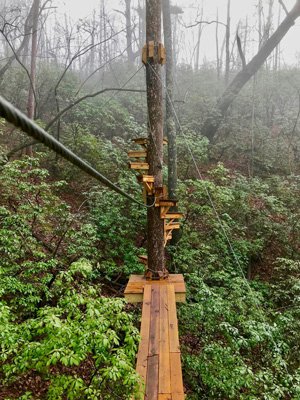
Who are forest rope parks suitable for? Target groups and requirements
Forest rope parks are designed for people of all ages and abilities. Whether you’re an adventurous teenager, a family looking for an exciting outing or a group of friends looking for a new challenge – forest rope parks offer something for everyone. They are also ideal for school classes and team-building events, as they promote cooperation and trust within the group.
The requirements in forest rope parks vary depending on the course and level of difficulty. While some routes require little physical effort and little technical ability, others are more challenging and require good fitness and climbing skills. But don’t worry – before you start, you will receive a thorough briefing and the necessary safety equipment to navigate safely through the courses.
Forest rope parks are not only a source of fun and adventure, but also a great way to explore nature, improve your fitness and push your personal limits. If you’re ready to breathe in the fresh air, test your limits and experience an unforgettable adventure in the trees, then a visit to a forest ropes course is just the thing for you. Pack your spirit of discovery and get ready for an adventure you won’t soon forget!
Climbing parks: the versatile world of climbing
Are you ready to explore the diverse and exciting world of climbing parks? Whether you’re an experienced climber or a curious beginner, climbing parks offer a wide range of challenges and experiences that will get your adrenaline pumping and help you improve your skills at the same time. Immerse yourself in the fascinating world of climbing parks and discover the different types and their unique features.
Different types of climbing parks and their special features
Climbing parks come in many shapes and sizes, but all have the common goal of providing a safe and fun climbing experience. Some climbing parks are specially designed for children and families, with lower courses and easier obstacles that are fun and develop motor skills at the same time. Others are aimed at experienced climbers who want to test their limits with higher and more technically demanding routes.
Indoor climbing parks offer climbing opportunities all year round, regardless of the weather. They are equipped with artificial climbing walls that offer a variety of routes and levels of difficulty. Outdoor climbing parks, on the other hand, make use of the natural landscape and often offer additional activities such as zip lines or Tarzan jumps.
Each climbing park has its own special features, from the type of climbing walls and routes to the safety equipment and educational programs on offer. It is important to choose a park that suits your abilities, interests and safety requirements.
Climbing parks vs. forest rope parks: a direct comparison
Although climbing parks and forest rope parks are often mentioned in the same breath, there are some significant differences between them. Climbing parks usually focus on climbing on man-made structures, while forest rope parks allow climbing in a natural environment, often between trees.
Climbing parks usually offer a wider range of climbing challenges and techniques, from bouldering to lead climbing, and are often more technically demanding. Forest rope parks, on the other hand, focus on the experience of nature and overcoming obstacles that are integrated into the natural environment.
The choice between a climbing park and a forest rope park depends on your personal preferences. Would you like to practise your climbing technique in a controlled environment or are you looking for adventure in the great outdoors? Both types of parks offer unique experiences and benefits, and many climbing enthusiasts enjoy both forms of climbing.
Whether you’re looking for the challenge of a climbing park or the natural beauty of a forest ropes course, both offer the perfect opportunity to test your limits, improve your skills and experience an unforgettable day of adventure. Pack your climbing shoes and get ready for an exciting experience in the world of climbing!
High ropes courses: teamwork at dizzying heights
Are you ready to push the boundaries of your comfort zone and strengthen team spirit at the same time? High ropes courses offer a unique combination of personal challenge and collective teamwork that will take you and your group to new heights. Discover what makes high ropes courses so special and how they can contribute to personal and community development.
Definition and special features of high ropes courses
High ropes courses are specially constructed courses that are usually set at a height of three to fifteen meters above the ground. They consist of various stations and elements such as rope bridges, swings and balancing beams, all aimed at testing balance, courage and self-confidence. But the real attraction of high ropes courses lies not only in the physical challenge, but also in the mental strength required to conquer the heights.
A special feature of high ropes courses is their ability to push individual boundaries and promote team spirit at the same time. They are designed in such a way that they can hardly be mastered without the support and encouragement of team members. This creates an environment in which trust and cooperation are not only encouraged, but also required.

The role of high ropes courses in experiential education and team building
High ropes courses play an important role in experiential education and team building. They offer a platform on which groups can come together and overcome challenges together. These experiences are not only exciting and memorable, but also offer valuable lessons in communication, trust and leadership.
In team building, ropes courses are a powerful tool for strengthening the social fabric of a group. They force participants to leave their comfort zones, trust each other and work together to achieve common goals. These shared experiences can strengthen relationships between team members and promote a deeper understanding of one another.
In addition, high ropes courses offer an excellent opportunity for personal development. They challenge the participants to confront their fears and develop self-confidence. Overcoming the physical and mental challenges of a high ropes course can provide a profound sense of achievement and self-esteem.
Whether you’re part of a company, a school or a group of friends, a day on the high ropes course can be a transformative experience. It’s an opportunity to push boundaries, strengthen relationships and develop skills that go far beyond the heights of the course. Are you ready to take the plunge and discover the world of high ropes courses? Pack your courage and prepare for an adventure you won’t soon forget!
Climbing and bouldering facilities: indoor and outdoor options
Are you ready to discover the dynamic world of climbing and bouldering? Whether you prefer the controlled environment of an indoor climbing hall or are looking for the raw, natural experience of outdoor climbing, there is an option to suit every taste and level. Delve into the differences between indoor and outdoor climbing facilities and discover why bouldering has become one of the most popular trend sports.
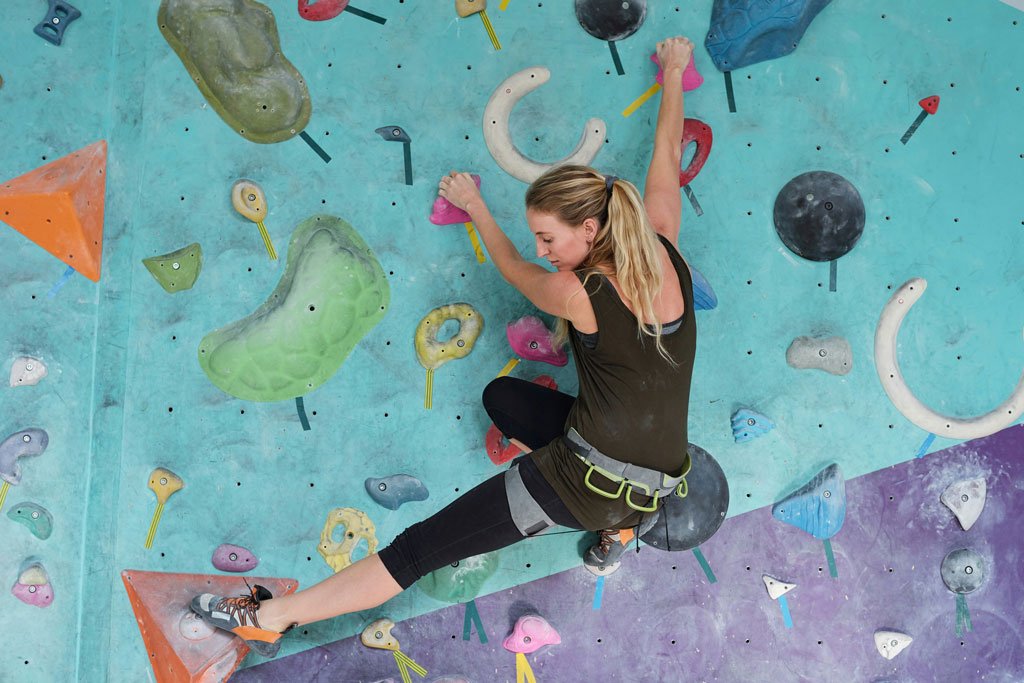
Differences between climbing gyms and outdoor climbing facilities
Climbing gyms offer a safe and controlled environment where you can climb regardless of weather conditions. They are ideal for beginners and advanced skiers alike, as they offer a variety of routes with different levels of difficulty. In climbing gyms you will find everything you need for your climbing experience, from rental equipment to professional courses that teach you the basics of climbing and safety.
In contrast, outdoor climbing facilities offer an authentic climbing experience in the midst of nature. Whether on rock faces, in quarries or on specially designed outdoor walls – climbing outdoors presents a completely different challenge. Here you can not only put your climbing skills to the test, but also enjoy the beauty of nature. However, outdoor climbing requires more thorough preparation and knowledge of local conditions and safety precautions.
Bouldering as a trend sport: features and equipment
Bouldering, climbing without a rope at jump height, has developed into an extremely popular discipline in its own right. Bouldering concentrates on short, intensive routes, so-called “problems”, which have to be solved in just a few moves. This sport is particularly accessible as it requires less equipment and can be practiced both in indoor bouldering halls and on outdoor bouldering blocks.
The key characteristics of bouldering are strength, technique and problem-solving skills. It’s a great way to improve your climbing technique as you can work on a variety of moves and holds. All you need for bouldering is climbing shoes, chalk to improve your grip and a bouldering mat (crash pad) to ensure safety in the event of a fall.
Whether you choose indoor climbing, outdoor climbing or bouldering, each discipline offers unique challenges and rewards. Climbing and bouldering are not only excellent ways to stay fit, but also offer the chance to find and experience a strong community of like-minded people. Are you ready to climb the walls and discover the world of climbing and bouldering for yourself? Grab your shoes and let’s get started!
Safety and equipment in climbing facilities
Safety always comes first when climbing. Whether you are an experienced climber or a beginner, the right equipment and knowledge of safety standards are essential to make your climbing adventure safe and enjoyable. Let’s take a look at what you should know about safety and equipment in climbing parks and high ropes courses.
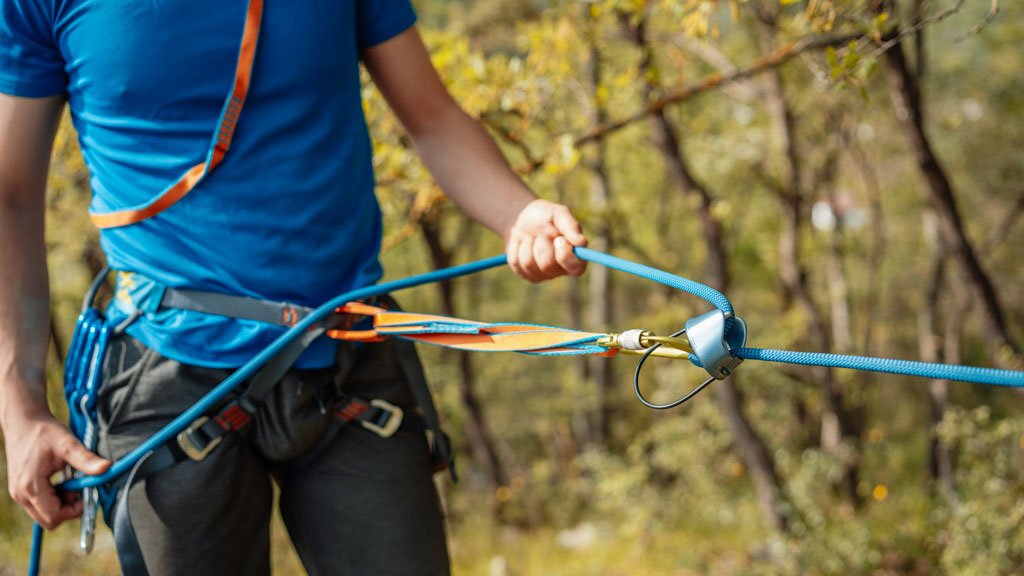
Safety standards and equipment in climbing parks and high ropes courses
Strict safety standards are applied in climbing parks and high ropes courses to minimize the risk of accidents. Before you start climbing, you will usually go through a safety briefing where you will learn how to put on and use your equipment correctly. This equipment usually includes a helmet, a climbing harness, safety ropes and, if necessary, gloves.
It is important that you follow the instructions of the trainer or supervisor exactly and wear the equipment correctly during the entire climbing process. Always check that your helmet fits properly and that your harness is securely fastened before you start climbing.
Tips for beginners: How do you start your climbing adventure safely?
If you are new to climbing, getting started can be intimidating at first. But don’t worry, with the right tips and preparation you can start your climbing adventure safely and confidently:
- Choose the right climbing park: Start with a climbing park or climbing hall that offers special courses or introductions for beginners. This gives you the opportunity to learn under the guidance of an experienced trainer and feel confident.
- Dress appropriately: Wear comfortable clothing that allows you to move freely and closed shoes with good support. Avoid loose or hanging items of clothing that could get caught in the equipment.
- Listen to the briefing: Pay close attention to the safety briefing and ask questions if you don’t understand something. It is important that you fully understand the safety equipment and techniques before you start.
- Start slowly: start with easier courses or routes to get a feel for climbing. Gradually increase the difficulty as you gain more experience and confidence.
- Climb with friends or family: Climbing is a great activity to enjoy together. Not only is it more fun, but you also have someone to back you up and support you.
- Listen to your body: don’t overestimate your abilities and take breaks when you’re tired. Climbing can be physically demanding and it is important to listen to your body’s signals.
By following these tips and always observing the safety rules, you can enjoy an exciting and safe climbing experience. Climbing is not only a great way to stay fit, but it also offers the chance to learn new skills and surpass yourself. Pack your sense of adventure and start your new climbing adventure safely!
Summary of the main differences and personal recommendations
To make your decision easier, here is a brief summary of the main differences between the climbing facilities:
- Climbing gyms offer a controlled environment that is ideal for beginners and for training specific techniques.
- Outdoor climbing parks offer an authentic climbing experience in nature and are ideal for those seeking adventure and closeness to nature.
- High ropes courses focus on teamwork and are perfect for group activities and team building.
- Bouldering facilities focus on short, intensive climbing routes and are ideal for those who want to climb without ropes and harnesses.
My personal recommendation: If you are new to climbing, start with an indoor climbing hall to learn the basics. When you feel ready, extend your experience to outdoor climbing parks or high ropes courses to experience different types of climbing. And if you’re looking for a new kind of challenge, try bouldering to improve your technique and strength.
No matter what type of climbing facility you choose, the most important thing is that you have fun and stay safe. Climbing is an enriching activity that helps you to push your limits, develop new skills and see the world from a new perspective. Pack your sense of adventure and start your climbing trip today!
| Criterion | Climbing hall | Outdoor climbing park | High ropes course | Bouldering facility |
|---|---|---|---|---|
| Goal | Learn the basics, improve your technique | Adventure, nature experience | Teamwork, team building | Technique, strength, short challenges |
| Experience level | Beginner to advanced | Advanced, nature lovers | Groups, beginners to advanced | Beginner to advanced |
| What is on offer? | Controlled environment, courses | Authentic climbing experience, nature | Team exercises, social interaction | Short, intensive routes |
| Security | High, controlled conditions | Variable, depending on location and weather | High, focus on group safety | High, climbing at jump height |
| Ideal for | Learning and practicing, all ages | Adventure seekers, nature lovers | Companies, schools, groups | Technique training, fast sessions |
| Personal recommendation | Starting point for newcomers | Extension for experienced users | Group activities | New challenges, focus on technology |
Conclusion: Which climbing system is right for me?
You have now gained a comprehensive insight into the diverse world of climbing facilities. From lofty heights in high ropes courses to technical challenges in bouldering halls – the possibilities are as varied as the climbers themselves. But which climbing facility is right for you? Let’s find out together how to choose the right climbing facility for your needs and wishes.
Decision-making aids for choosing the right climbing facility
Choosing the right climbing facility depends on various factors, including your experience, your physical condition and your personal preferences. Here are some questions to help you decide:
- What are your climbing goals?
Would you like to enjoy climbing as a leisure activity, improve your technique or prepare for competitions? Your goals can determine whether an indoor climbing hall, an outdoor climbing park or a specialized bouldering facility suits you best. - How experienced are you?
Beginners often benefit from the structured environment and learning opportunities that climbing gyms offer, while experienced climbers can appreciate the challenges and closeness to nature of outdoor climbing facilities. - What are you looking for in a climbing experience?
Are you looking for a social experience, a personal challenge or the opportunity to be out in nature? Your preferences can help you choose between high ropes courses, climbing parks and bouldering halls. - How important is safety to you?
While all reputable climbing facilities emphasize safety, indoor facilities often offer a more controlled environment, which can be particularly reassuring for beginners.
Just have a look at our search function for forest experiences. You’re sure to find something suitable!
Did you like my comparison? Then please leave me a review.
You are helping us and other nature lovers. Thank you very much 🙂 !
Frequently asked questions (FAQ) about climbing parks and high ropes courses
Are you new to the world of climbing and have questions? No problem! Here you will find answers to the most frequently asked questions from new climbers and those interested in climbing. Let us remove your uncertainties and motivate you to start your climbing adventure.
Do I have to book my visit to the climbing park in advance?
The need for a booking varies from park to park. While individuals and smaller groups can often climb without booking in advance, it is advisable to book in advance at weekends or in good weather. Larger groups should always make a reservation.
Are there any age or weight limits?
Most climbing parks set minimum heights instead of minimum ages and have weight limits, usually between 100 and 130 kg. Find out in advance about the specific requirements of the climbing park.
How should I dress?
Wear comfortable, sporty clothing and sturdy shoes. Long hair should be tied back, jewelry and loose objects removed. Clothing should be suitable for the weather.
What should I bring with me?
Apart from suitable clothing, you don’t normally need any special equipment. Sun protection in summer is recommended. Climbing equipment is provided in the park.
How long can I climb?
The climbing time can vary, but is usually between 2 and 4 hours. Find out about the park’s specific regulations.
Do I have to fill in anything?
Yes, you usually have to fill in a form with your personal data and accept the conditions of participation.
Do spectators have to pay admission?
In most cases, admission is free for spectators, but it is advisable to check this in advance.
How well trained are the supervisors?
Climbing park supervisors undergo special training and are responsible for safety and support.
How safe is climbing?
Climbing in climbing parks is very safe thanks to modern equipment and safety systems. The safety equipment varies depending on the park, but the safety of the climbers is always paramount.
What happens if I get a fear of heights?
Don’t worry, the staff are trained to deal with such situations and can help you or abseil you down safely.
What happens when it rains?
Light rain is usually not a problem, but in the event of heavy rain, storms or thunderstorms, operations are suspended for safety reasons.
Can I bring my dog with me?
Many climbing parks allow dogs on the premises as long as they are kept on a lead. Find out about the rules of the respective park in advance.
Is smoking or alcohol consumption allowed?
Smoking is usually only permitted in certain areas, alcohol is generally prohibited. Persons under the influence of alcohol or drugs are not allowed to climb.

